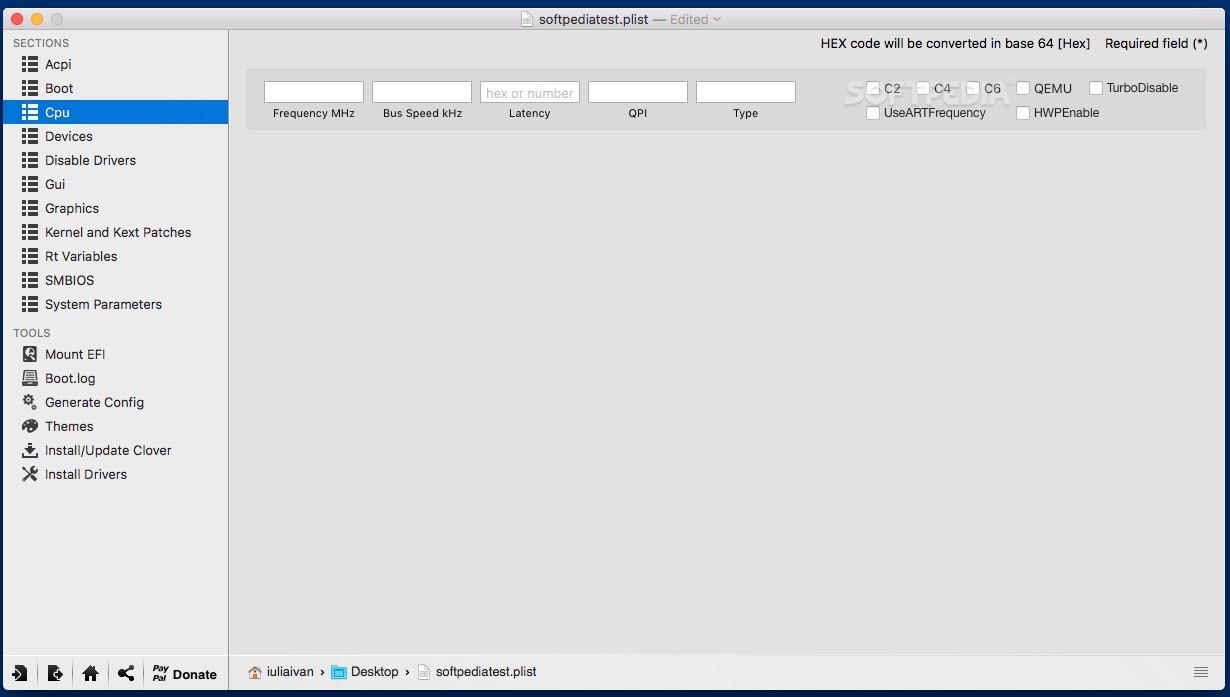
- RESET NVRAM USING CLOVER CONFIGURATOR MAC OS X
- RESET NVRAM USING CLOVER CONFIGURATOR PC
- RESET NVRAM USING CLOVER CONFIGURATOR WINDOWS
The required Linux Kernel configuration options for UEFI systems are: Linux kernel configuration options for UEFI
RESET NVRAM USING CLOVER CONFIGURATOR WINDOWS
If the "BIOS mode" is not UEFI, then Windows is not booted in UEFI mode.

RESET NVRAM USING CLOVER CONFIGURATOR PC
In the System Summary section look at the values of "System Type" and "BIOS mode".įor a 64-bit Windows on a 64-bit UEFI it will be System Type: 圆4-based PC and BIOS mode: UEFI, for a 32-bit Windows on a 32-bit UEFI - System Type: x86-based PC and BIOS mode: UEFI. So, if you have a 32-bit version of Windows booted in UEFI mode, you have a 32-bit UEFI. Most of the Macs do not have UEFI 2.x firmware as Apple's EFI implementation is not fully compliant with UEFI 2.x specification.Ħ4-bit versions of Windows do not support booting on a 32-bit UEFI. If it returns EFI64 then it is x86_64 EFI firmware. If the command returns EFI32 then it is IA32 (32-bit) EFI firmware. $ ioreg -l -p IODeviceTree | grep firmware-abi
RESET NVRAM USING CLOVER CONFIGURATOR MAC OS X
To find out the arch of the EFI firmware in a Mac, type the following into the Mac OS X terminal: All Macs capable of running Mac OS X Snow Leopard 64-bit Kernel have x86_64 EFI 1.x firmware. Pre-2008 Macs mostly have IA32 EFI firmware while >=2008 Macs have mostly x86_64 EFI. If the file does not exist, then you have not booted in UEFI mode. It will return 64 for a 64-bit (x86_64) UEFI or 32 for a 32-bit (IA32) UEFI. On distributions running Linux kernel 4.0 or newer, the UEFI firmware bitness can be found via the sysfs interface.

The firmware bitness can be checked from a booted operating system. For example, GRUB when installed with the i386-efi target. Note: Systems with IA32 UEFI require using a boot loader that supports mixed mode booting. Therefore the EFI application must be compiled for that specific firmware processor bitness/architecture. The only known devices that use IA32 (32-bit) UEFI are older (pre 2008) Apple Macs, Intel Atom System-on-Chip systems (as on 2 November 2013) and some older Intel server boards that are known to operate on Intel EFI 1.10 firmware.Īn x86_64 UEFI firmware does not include support for launching 32-bit EFI applications (unlike x86_64 Linux and Windows versions which include such support). The vast majority of UEFI firmwares, including recent Apple Macs, use x86_64 UEFI firmware. a memory testing or recovery tool), should be a EFI application corresponding to the UEFI firmware bitness/architecture. Under UEFI, every program whether it is an OS loader or a utility (e.g.

The latest UEFI specification can be found at. Unless stated explicitly, these instructions are general and some of them may not work or may be different in Apple Macs. This kind of firmware does not fall under any one (U)EFI specification and therefore is not a standard UEFI firmware.

Note: Early vendor UEFI implementations may carry more bugs than their BIOS counterparts.


 0 kommentar(er)
0 kommentar(er)
